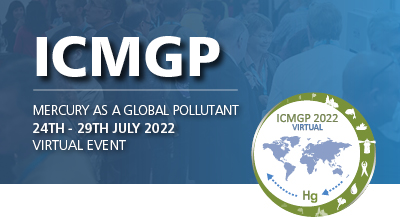| Abstract Title: | Mercury biomagnification by predatory invertebrates: How exposure methods affect trophic transfer |
| Presenter Name: | Cailin Mackenzie |
| Company/Institution: | Oregon State University |
| Session: | Special Session - Global mercury concentrations in biota: their use as a basis for a global monitoring framework |
| Day and Session: | Tuesday 26th July - Session One |
| Start Time: | 07:30 UTC |
| Co-Authors: | Cailin Mackenzie |
Abstract Information :
Representative laboratory studies of contaminant cycling depend on mimicking naturally relevant conditions in an unnatural setting. Some toxicants, like methylmercury (MeHg), are highly complex in their freshwater trophic transfer, with field studies documenting wide variability in biomagnification rates. Predatory invertebrates like dragonfly larvae are increasingly being used to monitor mercury risk through programs like the U.S. National Parks Service?s Dragonfly Mercury Project. Experimental work is essential to understand this variability, yet the efficacy of laboratory methods to characterize MeHg transfer in aquatic food webs remains questionable. Our work unpacks how different methodologies affect trophic transfer of MeHg from oligochaete prey (Lumbriculus variegatus) to larval dragonfly predators (Libellulidae sp.) using three different methodologies. We quantified dragonfly dietary bioaccumulation from prey dosed aqueously with MeHg-chloride vs MeHg-cysteine, and with prey dosed dietarily with MeHg-contaminated algae. All experiments used 3-4 MeHg concentrations and ran for 5-8 weeks. We also evaluated impacts of exposure on dragonfly growth, body condition, feeding rate, predator avoidance behavior, and immune response. Preliminary data suggest that dragonflies bioaccumulate MeHg in a dose dependent manner but there is no difference between MeHg-chloride and MeHg-cysteine trophic transfer (p>0.5, Welch?s t-test). All dosed treatments showed biomagnification factors less than 3, decreasing with increasing mercury dose. Prey dietarily dosed with MeHg further refined our study by exploring how increasing exposure realism impacts biomagnification. Whether these data indicate constraints in laboratory methods testing or a realistic view of biomagnification patterns occurring in nature will be explored. We will also present results of a metanalysis quantifying effect size and variability drivers in predatory invertebrate MeHg biomagnification reported in the literature. Environmentally representative laboratory methods are critical to accurately quantify contaminant risk and characterize toxicity, and successful future monitoring and modeling efforts depend on deeper examination of dietary accumulation by predatory invertebrates.



